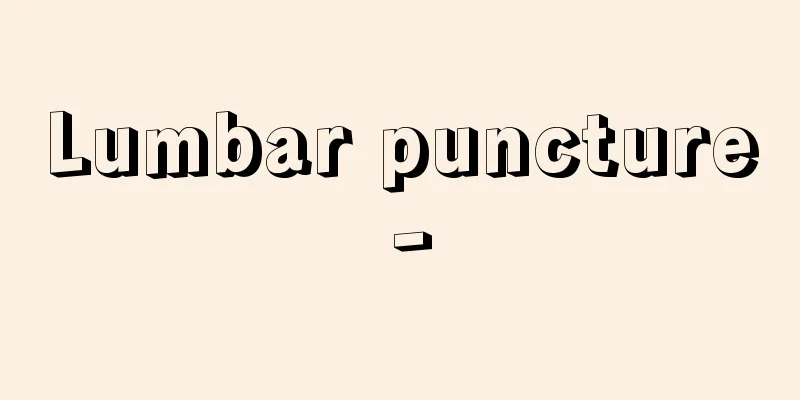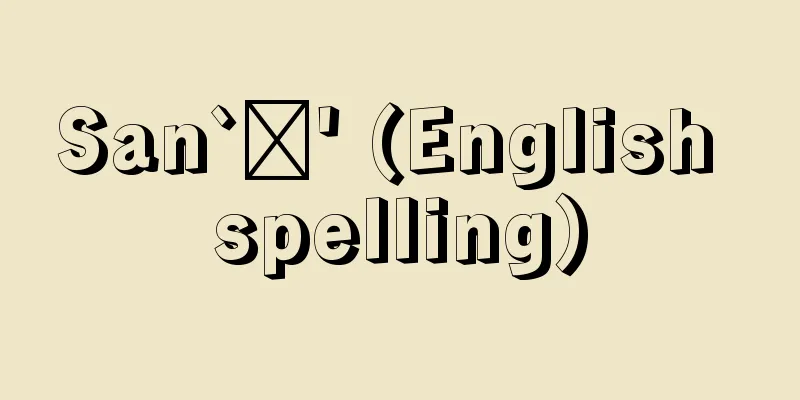Katsu Kaishu

|
An enlightened Shogunate vassal during the late Edo period. Born on January 30, 1823, into the poor Hatamoto Katsuie clan with a stipend of just over 41 koku. Nicknamed Rintaro, his given name was Yoshikuni, and later changed his name to Yasuyoshi. He penned the name Kaishu and was called Awa no Kami. Katsuie's father, Kokichi, bought the Hatamoto stock of the family by becoming an adopted son-in-law. Kokichi's birthplace, the Hatamoto Otani clan, was also purchased for Kokichi's father by Kokichi's grandfather, Kengyo Otani, who ran a moneylender business. Furthermore, as his father Kokichi was unemployed and lived a lawless life among the townsfolk, there was an atmosphere of commoners in the surrounding area. He studied swordsmanship under Shimada Toranosuke (Jikishinkage-ryu) and even served as his substitute trainer, but on Shimada's advice he decided to study Western military science. His studies were renowned, and it is said that he would visit the homes of people who owned hard-to-obtain Dutch books every night for six months to copy them. In this way, he began opening a Dutch studies school at his home in 1850 (Kaei 3), and in 1855 (Ansei 2) he was recommended by Okubo Tadahiro (Ichio) to work at the Foreign Book Translation Office. In the same year he went to the Naval Training School in Nagasaki as head of the naval trainees, where he received training in navigation from Dutch officers. Three years later, he returned to Edo and became head of the instructors at the Naval Training School. In 1860 (Man'en 1), he accompanied Shinmi Masaoki, the envoy to ratify the Treaty of Amity and Commerce between the United States and Japan, across the Pacific Ocean on the Kanrin Maru. Kaishu, who had led an all-Japanese crossing of the Pacific Ocean and seen modern times in America, began the task of building a modern navy for the shogunate, which was on the verge of collapse. After returning to Japan, he held various positions, and in 1862 (Bunkyu 2) he established a naval training school in Kobe as a warship commissioner, and recruited a wide range of personnel, including not only shogunate officials but also Sakamoto Ryoma and the patriots he had invited. Two years later, Kaishu was dismissed and the training school was closed, but during this time he came into contact with Kido Takayoshi and Saigo Takamori, and influenced them. However, in 1866 (Keio 2), he was appointed to clean up the aftermath of the Second Shogunate-Choshu War (the Conquest of Choshu), which had been defeated, but he became isolated from the shogunate's pro-war movement, which had allied with France. This was probably because Kaishu placed more importance on the unification of Japan as a nation than on the shogunate. When Edo was surrounded by the new government forces during the Boshin War, Kaishu's insight was the result of his ability to appease the pro-war shogunate officials and meet with Saigo Takamori, who supported the new government, to achieve the bloodless surrender of Edo, which also saved Japan from foreign interference. After the Meiji Restoration, he declined the invitation of the new government and retired to Shizuoka (Sunpu) for a while, but in 1869 (Meiji 2), he was appointed Minister of War, and after that he served as Vice-Minister of the Navy, Councillor and Minister of the Navy, and later became a member of the House of Elders, an adviser to the Privy Council, and became a count. Perhaps because it was rare for a former Shogunate official to serve in the new government, he was criticized by Fukuzawa Yukichi for his "theory of self-restraint." However, he spent the rest of his life writing about the history of the former Shogunate, and his well-known works include "Naval History," "Army History," and "Suijinroku." Kaishu's transcripts of conversations, "Hikawa Seiwa" and "Kaishu Zadan," are also good materials for learning about Kaishu's upbringing and way of thinking. He died on January 19, 1899. His grave is located on the banks of Senzoku Pond in Ota Ward, Tokyo, where his villa, Senzokuken, was located. [Kei Ikeda] "Katsu Kaishu" by Matsuura Rei (Chuko Shinsho)" ▽ "Katsu Kaishu" by Ishii Takashi (1974, Yoshikawa Kobunkan)" [Reference] |©Shogakukan Library "> Katsu Kaishu Source: Shogakukan Encyclopedia Nipponica About Encyclopedia Nipponica Information | Legend |
|
幕末期の開明的な幕臣。文政(ぶんせい)6年1月30日、石高41石余の貧乏旗本勝家に生まれる。通称麟太郎(りんたろう)、名は義邦(よしくに)、のち安芳(やすよし)と改名。海舟と号し、安房守(あわのかみ)と名のった。勝家は、父小吉(こきち)が婿養子になる形で同家の旗本株を買ったもの。小吉の生家である旗本男谷(おたに)家も、金貸しを営んでいた小吉の祖父男谷検校(けんぎょう)が、小吉の父のために買ったものであった。しかも父小吉が無役であり、市井(しせい)のなかで無頼の生活を送っていた関係で、周辺には庶民の雰囲気があった。剣は島田虎之助(とらのすけ)(直心影流(じきしんかげりゅう))に学び、その代稽古(だいげいこ)を勤めるほどになったが、島田の勧めで西洋兵学に志した。その勉強ぶりは有名で、入手しにくい蘭書(らんしょ)をその所有者の家に毎夜、半年間通って書写したという。こうして1850年(嘉永3)から自宅で蘭学塾を開くようになり、1855年(安政2)には大久保忠寛(ただひろ)(一翁(いちおう))に推挙されて蕃書(ばんしょ)翻訳所に出仕した。同年さらに海軍伝習生頭役(とうやく)として長崎の海軍伝習所に赴き、オランダ士官より航海術の訓練を受けた。3年後江戸に帰り軍艦操練所教師方頭取となり、1860年(万延1)には日米修好通商条約批准使節の新見正興(しんみまさおき)に随従して、咸臨丸(かんりんまる)で太平洋を横断することとなった。 日本人だけの太平洋横断を指揮し、アメリカで近代を見聞してきた海舟が、倒れかかった幕府で近代海軍を建設する仕事にとりかかる。帰国後各職を歴任し、1862年(文久2)軍艦奉行並(ぶぎょうなみ)として神戸に海軍操練所を設け、幕臣だけでなく、坂本龍馬(りょうま)や龍馬に誘われた志士たちなどを含めて広く人材を集めた。2年後、海舟は免職になり操練所は閉鎖されるが、この間木戸孝允(たかよし)や西郷隆盛(たかもり)らと接触があり、彼らに影響を与えている。ところが1866年(慶応2)敗北した第二次幕長戦争(長州征伐)の跡始末のために登用されるが、フランスと手を組む幕府中心の主戦的な流れから孤立していく。海舟には、幕府よりも日本の国家統一を重視する考え方があったからであろう。戊辰(ぼしん)戦争で江戸が新政府軍に囲まれたとき、主戦派の幕臣をなだめ、新政府側の西郷隆盛と会談して江戸の無血開城を実現させたことは、こうした海舟の見識の結果であって、日本を外国の干渉から救うことをも意味した。 維新後は、しばらく新政府の誘いを断って静岡(駿府(すんぷ))に退いていたが、1869年(明治2)兵部大丞(ひょうぶだいじょう)に就任してから、海軍大輔(たいふ)、参議兼海軍卿(きょう)を歴任し、のち元老院議官、枢密院顧問官となり、伯爵になっている。旧幕臣で新政府に出仕したのが珍しかったためか、福沢諭吉に「痩我慢(やせがまん)の説」で非難された。しかし余生は、旧幕府の歴史の著述に使っており、『海軍歴史』『陸軍歴史』『吹塵録(すいじんろく)』などが知られている。また海舟の談話筆記である『氷川清話(ひかわせいわ)』と『海舟座談』は、海舟の生い立ちや考え方を知るにはよい材料である。明治32年1月19日没。墓所は、別邸「洗足軒(せんぞくけん)」のあった東京都大田区洗足池畔。 [池田敬正] 『松浦玲著『勝海舟』(中公新書)』▽『石井孝著『勝海舟』(1974・吉川弘文館)』 [参照項目] |©小学館ライブラリー"> 勝海舟 出典 小学館 日本大百科全書(ニッポニカ)日本大百科全書(ニッポニカ)について 情報 | 凡例 |
Recommend
synthetisches Urteil a priori
… [Kant] Kant deeply considered the issues at sta...
Camphor - Camphor (English spelling)
Camphor is also called camphor. Camphor, obtained...
Court clerk - saibansho shokikan
A court clerk is a non-judge official of each cou...
Hymenophyllaceae
...Sometimes used for bonsai. [Hymenophyllaceae] ...
Natural Language Processing
With the advent of computers, programming languag...
Japan Air Lines (English)
…It is also called “Nikko” for short. Its English...
Heartburn - Breastburn
Discomfort in the stomach. A hot, tight feeling be...
quadrivium
... In terms of content, natural science is often...
Pierrot - Pierrot (English spelling) French
A type of Western clown. Its prototype is the slo...
Portativ
…There are various sizes of organs depending on t...
Mackenzie, William Lyon
Born March 12, 1795 in Dundee, Scotland [Died] Aug...
Gankouroku - Gankouroku
…In addition to his poetry, his Shaku Daxing Lun,...
Ashigaru Town - Ashigaru Town
…The residences of the senior vassals were locate...
Procter & Gamble Co.
The world's largest soap and detergent manufac...
Suvorovskoe uchilishche (English spelling)
… In the 18th and 19th centuries, European countr...









